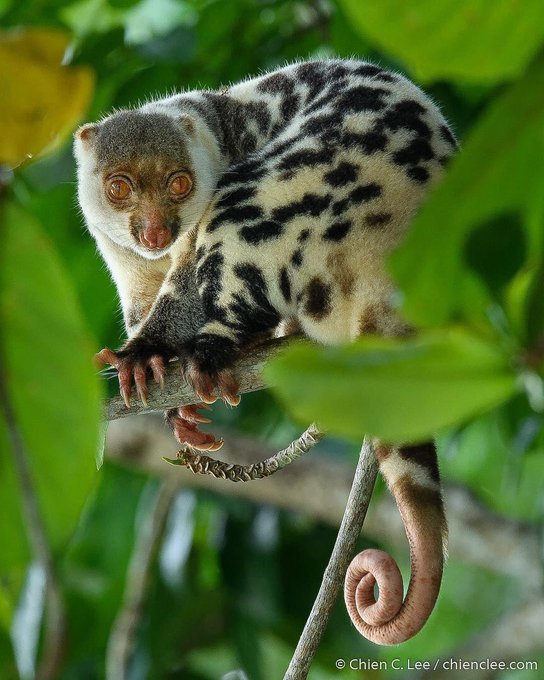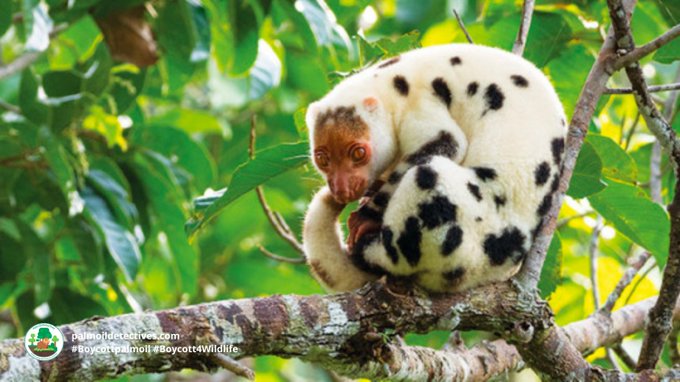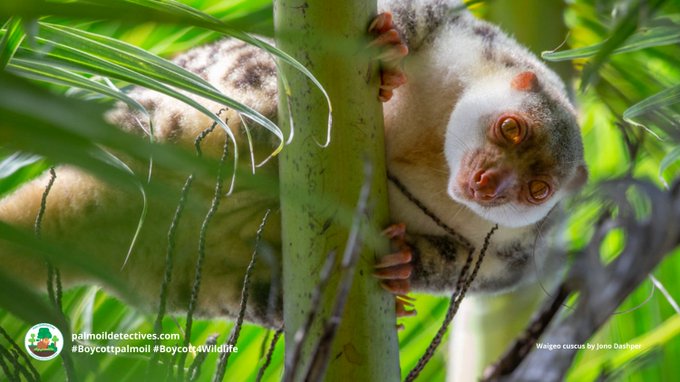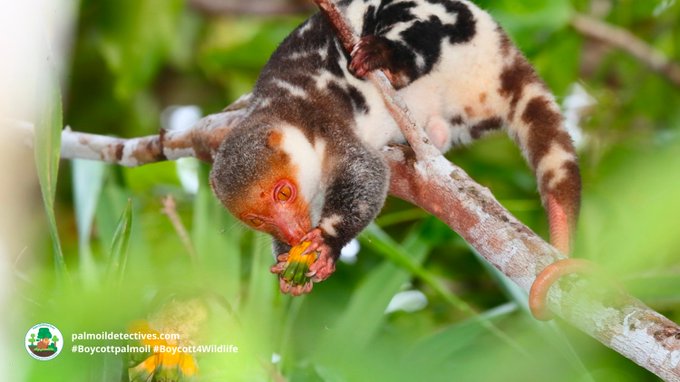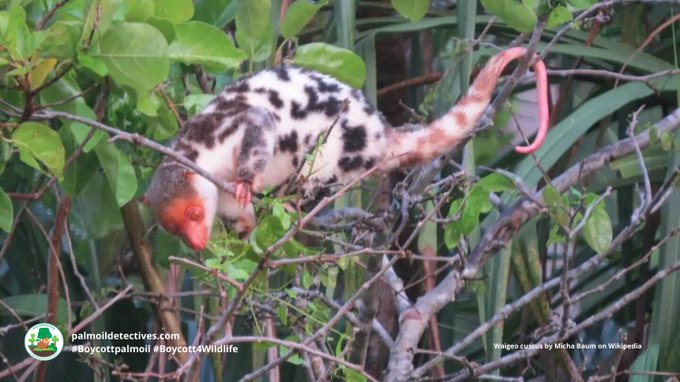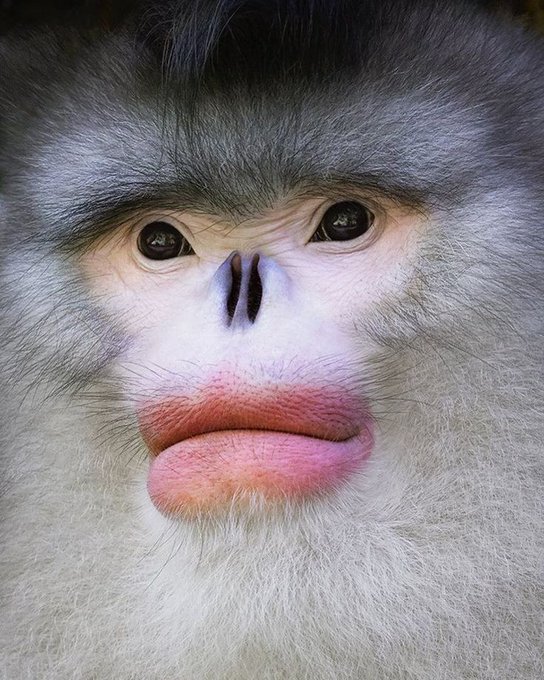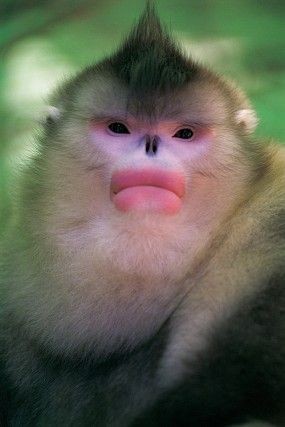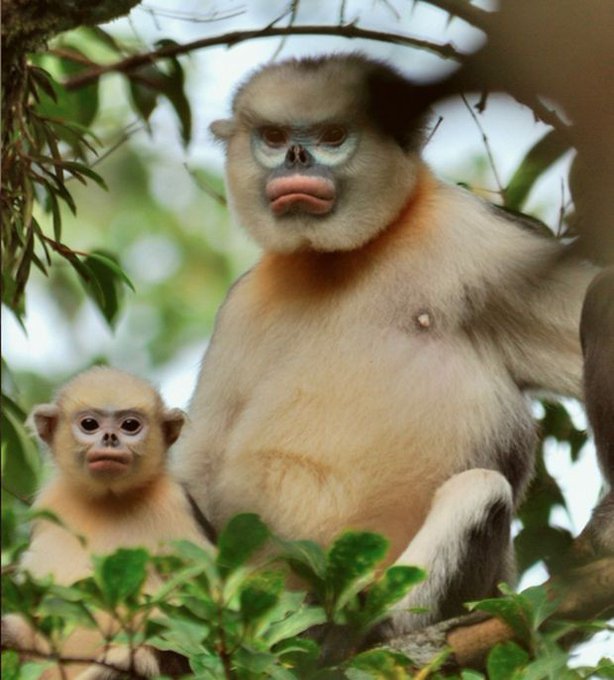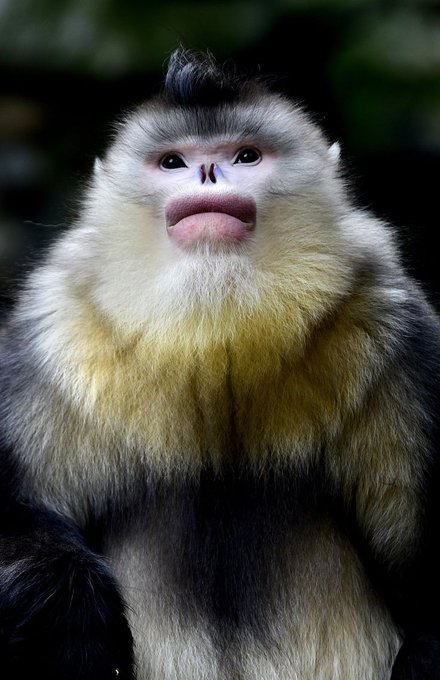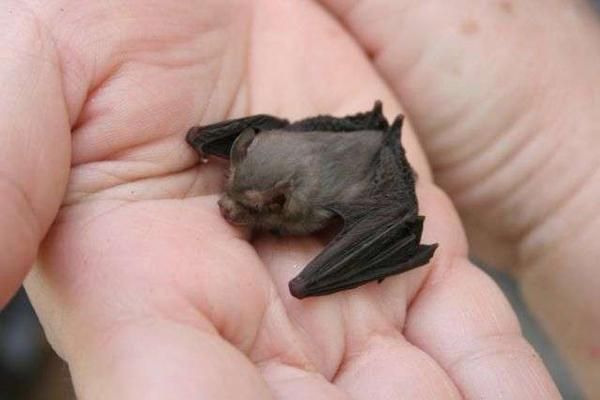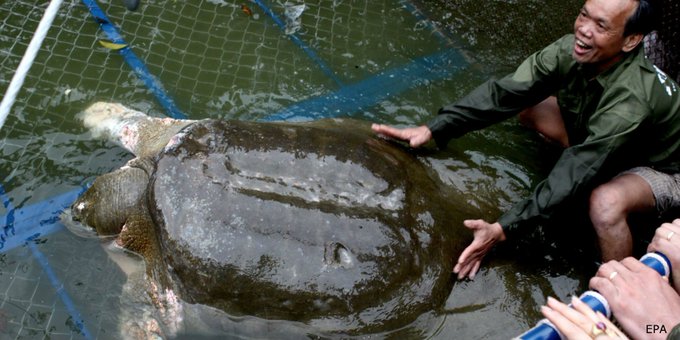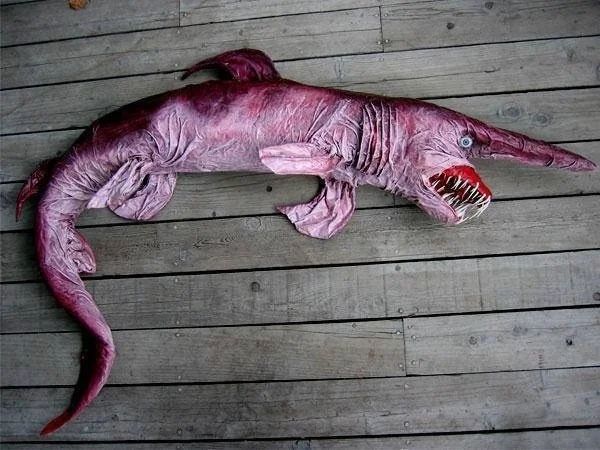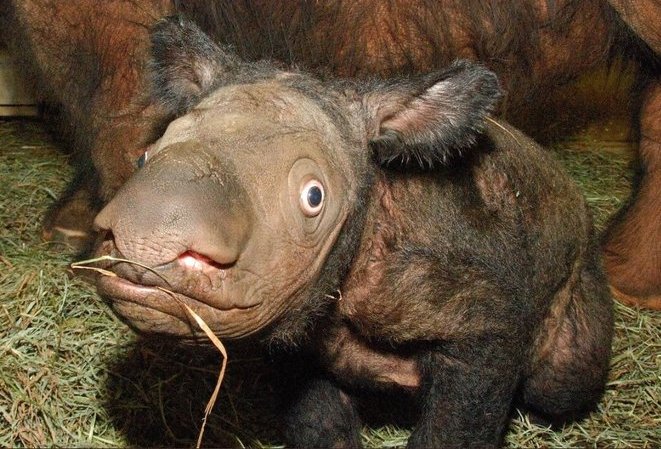Wild Animals That Have Rarely Been Seen

July 24, 2025
•19 min read
Here are some wild animals that have rarely been seen!
The world we live in is chock-full of crazy and colourful creatures, but a few are so seldom seen that you’d be forgiven for thinking they’re mythical beings! From deep in the oceans to high in the trees, these crazy critters can hide just about anywhere. Let's go on a safari of some of the strangest wild animals that have rarely been seen!
Black-Spotted Cuscus
The dense forests of Northern New Guinea are home to thousands, if not millions, of animal species. But there's one slinking about in the darkness that’s as confusing as it is captivating! This is the Black-Spotted Cuscus, a mysterious marsupial that looks like a cross between a cat, a fox, and a monkey!
The Waigeou cuscus or Waigeou spotted cuscus (Spilocuscus papuensis) is a species of marsupial in the family Phalangeridae. It is endemic to the island of Waigeo in Indonesia 🇮🇩 Unlike all other members of the genus Spilocuscus, both genders are whitish with black spots. It
The Black Spotted Cuscus is a wide-eyed fuzzy cutie that lives in the rainforests of #PapuaNewGuinea endangered by #palmoil and #mining #deforestation , there are no known conservation efforts. Join the #Boycott4Wildlife on brands destroying their home! palmoildetectives.com/2021/01/26/bla…
Pyrenean Desman
In Catalonia’s Alt Pirineu National Park, a strange combination of a rat, mole, and platypus scurries around on the ground entirely undetected, that is, until it’s caught. This elusive little animal is a Pyrenean Desman.
Using its twitchy trunk-like nose, it roots through mud and crevices for insects and fish like a tiny, carnivorous elephant. Unlike an elephant though, these little critters are also amphibious! They can close their nostrils and ears while swimming, and their paddle-like paws allow them to zip through the water like some sort of furry fish! But because this minute mammal is only about 5 inches long, nocturnal, and lightning fast, it’s very hard to spot! The little pocket rocket is so hard to study in fact, that researchers have resorted to hunting for its poop instead! It’s a dirty way of extracting DNA from the animals without having to dive into the water after them! But maybe those researchers are looking in the wrong places, because some Desman seem to care more about having fun than running away!Gooty Tarantula
The Gooty Tarantula is a spider that is as spine-tinglingly scary as it is bizarrely beautiful! The sapphire spider was first found in the town of Gooty, Southern India, in 1899, before completely disappearing for 102 years until it was spotted again in 2001!
Tonkin Snub-Nosed Monkeys
The mountaintops of the Khau Ca forests of Northern Vietnam are so high, parts of them soar spectacularly above the clouds, although that’s not the forests’ most incredible feature. Because it’s here, in trees perched up to 4,000 ft above sea level, that the Tonkin Snub-Nosed Monkeys climb. They may sound majestic, but up close they look a lot more like clowns!
Vocês conhecem o Macaco-preto-de-nariz-arrebitado? O macaco-preto-de-nariz-arrebitado (Rhinopithecus bieti), também conhecido. como macaco-de-nariz-arrebitado-de-Yunnan é uma das 5 espécies de Rhinopithecus. É endémico da China (províncias de Yunnan e Tibet).
Giant Squid
Despite their huge size, it’s still very rare to catch a sighting of an aptly named Giant Squid. That’s because these colossal cephalopods usually live in the darkest depths of the ocean, around 2,000 feet below the waves! So elusive are these massive sea monsters that it wasn’t until 2006 that the first footage of one was captured, taken off the coast of Japan!

Bumblebee Bat
You’d better look really closely if you want to get a glimpse of this miniature creature! With a body slightly over an inch long that weighs even less than a penny, the Bumblebee Bat is believed to be the smallest mammal in the entire world! It’s so small that, unlike other bats, it can actually hover in the air like a hummingbird, and dart away just as quickly!
The bumblebee bat is the smallest bat in the world.

Sea Pigs
Sea Pigs are a type of sea cucumber that live in the deepest, darkest, coldest parts of the ocean some 4 miles below the surface. And even though they’re very common down there, they live in such an extreme location that we will probably never see one with our own eyes. Which is a shame, because they’re so strange we could sit and watch them for hours!

Purple Frog
The lumpy, squishy Purple Frog is such a peculiar shape that it’s been dubbed the doughnut frog by some! This species lives underground and only emerges to breed for a few brief hours a year. In fact, the frog is so elusive that it took scientists until 2003 to discover it even existed!
This is partly because it only lives in the Periyar region of India. It might also be because its mating call sounds less like that of a frog, and more like a lost chicken:Amur Leopard
If ever an animal could be more different from the bloated blob of purple frogs, it’s the Amur Leopard. This beautiful big cat lives in Russian and Chinese rainforests and can run up to a blazing-fast 37 miles per hour! But even with such incredible speed, sadly it can’t outrun poachers, who have hunted it to the point where only 70 remain in the wild.
Great Potoo
Despite standing up to 2-foot tall, with bulging, bright yellow eyes, and a massive mouth, the Great Potoo isn’t an obvious animal. Even with all its freaky features, this South and Central American bird is actually a master of disguise, using its mottled brown color to blend-in seamlessly with the trees it rests on.
Okapi
At a glance, what sort of animal would you say the lesser-known Okapi is?
Did those stripes on its behind make you think it was a member of the Zebra family? Despite those signature streaks, Okapi’s are actually the only living relative of the giraffe!Yangtze Giant Softshell Turtle
Softshell Turtles come in all shapes and sizes, from the fairly common Florida variety, all the way up to their narrow-headed Indian cousins. But the big daddy of them all is, without a doubt, the Yangtze Giant softshell turtle.
Vietnam mourns legendary 'grandfather' turtle - @TheAgentBadger explains bbc.in/23eDTq1 #WATO
Vaquita
Also competing for the title of world’s rarest animal, we have the Vaquita. Of the seven species of porpoise, vaquitas are the second smallest, weighing around 95 pounds, which is less than half the weight of the largest porpoises.
The vaquita, the world’s smallest porpoise, slips closer to extinction goo.gl/9orwl7 #InOurHands @nytimes
Goblin Shark
Imagine swimming down into the ocean, reaching the crushing, dark depths almost a mile below the waves when, all of a sudden, a terrifying face emerges from the blackness! Meet the aptly named Goblin Shark.
The goblin shark is a deep sea creature that's been spotted less than 50 times since its discovery. Sculpture by Adelle Caunce!
Lowland Streaked Tenrec
At first glance, you’d be mistaken for thinking this yellow-streaked, mouse-like creature is some kind of long-lost Pokémon! But you won’t find it lurking in the long grass, because this is a Lowland Streaked Tenrec, and it prefers to spend its time in underground burrows throughout eastern Madagascar.
Because of their subterranean lifestyle, very little is known about these creatures, including how many even exist! But what we do know is crazy. Living in groups of around 20, the tenrecs communicate to each other using special quills found along their 6-inch bodies. By rubbing the quills together, they make sounds through “stridulation”. It’s the same process crickets use when they rub their legs together to make chirping noises, but tenrecs are the only mammals in the world that do this! But their knack for clever communication doesn’t mean they aren’t up for a fight! If threatened, the spiny little beasts raise the quills around their neck and will violently buck their head at their attacker. So, it's not recommended trying to catch these tiny terrors, with or without a Pokéball!Sumatran Rhino
The super rare Sumatran Rhino may not look all that tiny, but they are the smallest of their kind in the world! If you were to stand toe to toe with one of these tiny rhinos, you’d probably tower over them as they only stand up about 5 feet tall! But you shouldn’t underestimate the full force of these 2000 lb powerhouses, because if one charged at you, it would be like getting smacked in the stomach by two racehorses at once!
While their size certainly makes them stand out, it’s the luscious locks covering their body that really sets them apart from the rest of the Rhino family. This is because they’re the closest living relative to the woolly rhino, a long extinct species that last roamed the earth around 12,000 years ago during the ice age! Unfortunately, if trends continue, hair might not be the only thing Sumatran Rhinos share with their extinct woolly cousins. Due to habitat loss and fragmented populations, the number of Sumatran Rhinos has declined across Asia, and now fewer than 80 survive on the Indonesian islands of Sumatra and Borneo. But even in captivity, only two females have reproduced in the last 15 years! Take a look at one of their most recent babies. Cute, right? Or, kind of creepy?un rinoceronte bebé es el bicho mas feo que he visto en toda mi santa vida con diferencia
Elephant Shrew
The Elephant Shrew, also known as a Sengi, is a very odd little animal. Ranging from about 4 to 12 inches long, these miniature mammals sport trunk-like noses that they use to efficiently find and hoover up juicy grubs and insects. They’re so effective at searching for creepy crawlies that they play a vital role in keeping insect populations down around South Africa.
But natural disasters like droughts and forest fires have led to a worrying decline in Sengi numbers over the past decade. And even before this, the shrews were highly elusive animals! So elusive in fact, that the Somali sengi disappeared completely in the 1970s and wasn’t officially seen again for 50 whole years! Recently, however, a team of scientists in Djibouti, East Africa, set more than 1000 traps in 12 different locations to see if the little critters were still around. They traps were covered in an extensive combination of foods like peanut butter, oatmeal, and even yeast! After all this effort though, they only found 12 of the shy shrews. Maybe they should have tried something that smells and tastes like bugs instead.Shoebill Stork
Lurking in the swamps of eastern Africa, giant statues of prehistoric looking birds are perched over the water’s edge. But for all their stillness, these aren’t actually statues, they’re Shoebill storks!
At a shocking five-foot tall, these intimidating creatures can stand stone still for hours on end, waiting for prey to pass by. And the second something catches their ominous eyes, they leap into action, striking with their huge, serrated bills and completely engulfing whatever’s unfortunate enough to have gotten near. And Shoebills are known to eat massive, 6 ½ -foot-long monitor lizards, as well as baby crocodiles, so nothing is safe! Then, they swill out any excess water from their bill before decapitating their food. Despite its daunting demeanor, the Shoebill’s method of keeping cool is much less intimidating. The birds actually poop themselves, and as the putrid liquid slides down their hot legs it evaporates, cooling the animals down as it does so!